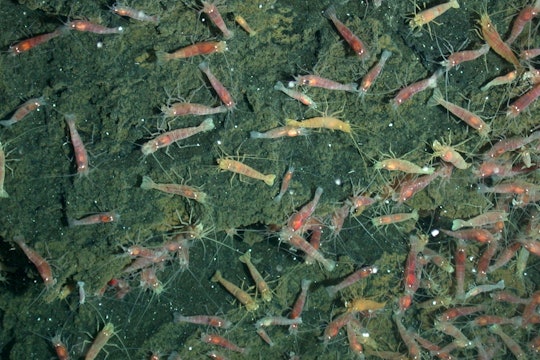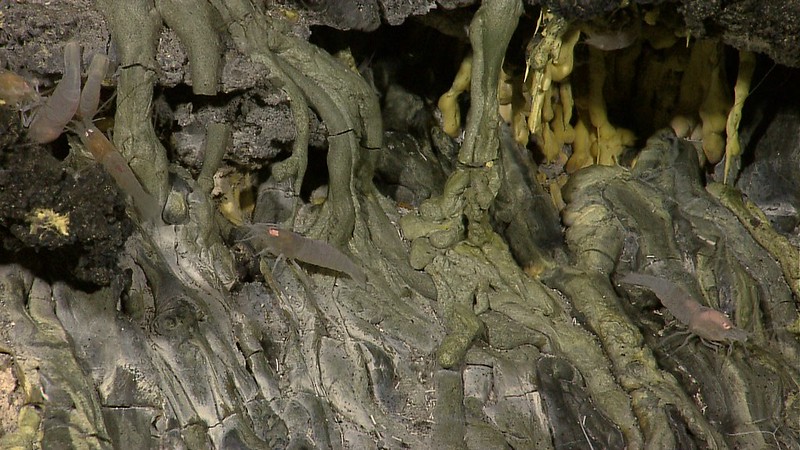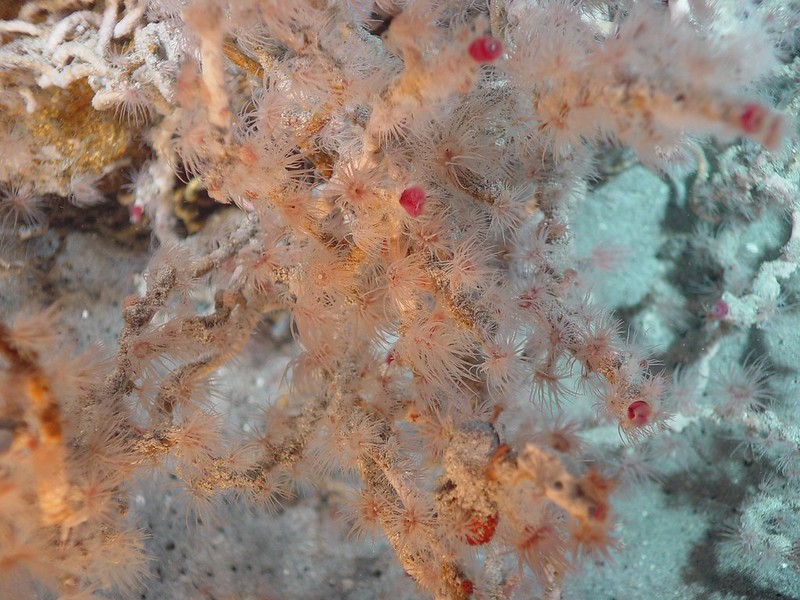
Submarine Ring of Fire 2006 Exploration, NOAA Vents Program
Scientists recreated a key step for the origin of life at hydrothermal vents
Simulating alkaline environments from 3 billion years ago showed formation of precursor cells is possible
The mystery of how life on Earth evolved is arguably one of the biggest outstanding questions in science today.
Scientific theories for how life evolved broadly fall into three categories. The first is the "panspermia" hypothesis, which is that the organic molecules that eventually gave rise to life were deposited on Earth by meteorites and other cosmic rubble. It sounds wild, but organic compounds have recently been identified from the Zag meteorite that was discovered the northwest corner of Africa in 1998.
A second theory of the origin of life is the Oparin-Haldane model, or the "primordial soup" hypothesis. This suggests that the chemical makeup of early Earth's atmosphere, sparked by electricity, led to the spontaneous formation of organic molecules. A set of famous experiments by chemist Stanley Miller in the 1950s showed that amino acids – the building blocks of proteins – could be synthesized in this way.
The final major theory for the origin of life hinges on the last major ecosystem discovered on our planet: deep-sea hydrothermal vents. These rifts in the Earth, thousands of meters below the sea surface, are home to creatures unlike anything seen elsewhere, like a species of eyeless shrimp with a light-sensing organ on their backs, or giant tube worms that lack digestive tracts that get all their food from bacteria living in their bodies. But even these strange life-forms are not the most interesting feature of this ecosystem.

Vent shrimp
These hydrothermal vents spew scalding hot water and various combinations of metals, sulfur, and other chemicals. They contain elements and conditions conducive to metabolic pathways that scientists believe were necessary for the evolution of life, but are missing from the other hypotheses. But it has been difficult to find evidence in support of the hydrothermal vent origin of life theory because researchers have so far been unable to replicate the formation of "prebiotic" chemical compounds – those that logically had to be in place before the evolution of Earth's earliest life forms. A paper published in November 2019 in Nature Ecology & Evolution has changed that.
Our lives are enabled by membranes. The membranes in the cells of every plant, animal, and bacterium on Earth all function in about the same way, which suggests that nature has been using the same basic blueprint for membrane construction since life first evolved. This blueprint consists of two layers of molecules, where one side of each molecule is hydrophobic (water-repelling) and the other side is hydrophilic, meaning it will co-exist with water. The hydrophilic heads of the molecules face out on each side of the membrane, and the hydrophobic tails – which consist of chains of carbon atoms – make up the interior. This structure is called a lipid bilayer. Proteins and other molecules drift around within the membrane where the hydrophilic tails meet.
Biologists think that the first life form on Earth also had a lipid bilayer membrane. But instead of each molecule having two tails, like ours do, they were simpler molecules with just one tail. In chemistry, this type of molecule is called a single-chain amphiphile (SCA). Specific biochemical characteristics of SCAs strongly suggest that, if they did originate on Earth, they were forged in hot, aquatic, high-pH environments, like deep-sea vents.
For SCAs to be the precursor to biological cells, they must to be able to form vesicles, tiny round structures which are lipid bilayers with liquid inside. But previous studies trying to find evidence in favor of the hydrothermal vent origin of life have not been able to achieve this, leading scientists to conclude that life might have originated elsewhere.
The research team behind the new study, led by University College London postdoctoral scientist, Sean Jordan, saw a key flaw in those previous studies: they all used simple mixtures of just one to three SCAs to try to generate vesicles. But nature can produce about 40 types of SCAs. So Jordan and the team decided to try using more varied mixtures of SCAs to recreate the range of these membrane building blocks that were likely present when the earliest life on Earth emerged, between 3.5-4 billion years ago.
They attempted to induce vesicle formation with mixtures of six different SCAs, all of which were fatty acids with tails consisting of 10-15 carbon atoms. They found that vesicles spontaneously formed at pH levels of up to nine, about the same pH as toothpaste. Sea water in the open ocean has a pH of about eight. Further tests showed that when they added six alkanol SCAs to the fatty acid SCA mixture, vesicles formed at pHs as high as 13 – about that of bleach or oven cleaner.

Tube worms at a hydrothermal vent
With that mixture of 12 fatty acid and alkanol SCAs, Jordan and the team then tested for vesicle formation at varied concentrations of magnesium chloride and calcium chloride to simulate an oceanic environment. And again, they observed vesicles forming in every trial when the pH of the solution was 12.
Then came the biggest test: they looked for vesicle formation in a solution with a very high pH (greater than 12) and the same levels of magnesium and calcium chloride as are in today's seawater. This trial was intended to replicate the conditions at a deep-sea vent. It was a success: stable vesicles, a key component necessary for the evolution life on Earth, readily formed in this salty, alkaline environment.
Although the methods previously employed to study vesicle formation had some of the right ingredients, it appears that the process is just a little bit more complicated in nature. And surprisingly, Jordan and the research team saw vesicles form under very harsh environmental conditions – those that scientists were ready to rule out as being conducive for vesicle formation.
Their findings show that, beyond being merely acceptable for vesicle formation, very hot and alkaline conditions are actually ideal. While this study doesn't prove that the genesis of life occurred on deep ocean vents, it shows that it is certainly a possibility.


I loved this piece! It’s amazing to think that by actually making our experimental systems more complex, rather than less, these researchers were able to produce micellular vesicles in such harsh conditions.
What I’m wondering is how pressure plays a role in their formation, as these hydrothermal vents have an incredible pressure difference compared to room conditions that is difficult to replicate. Since most piezophilic (or pressure-loving) bacteria and archaea living at the underwater vents have these chemically-simpler SCAs to allows for membranes that can withstand significant pressure at the thermal vents and still exhange with the environment, pressure may further reduce the multitude of vesicle options formed by these empirical protocells into the only ones that will survive.